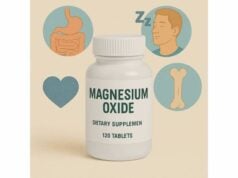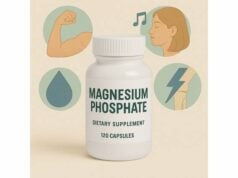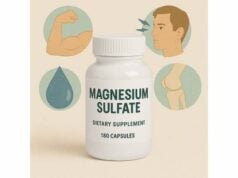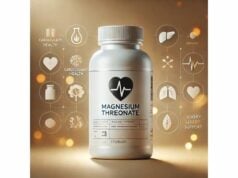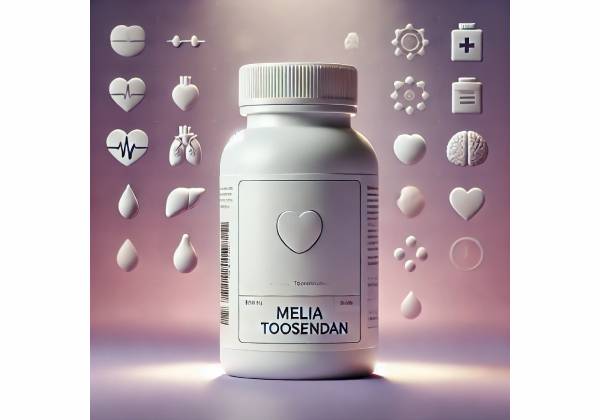
Melia toosendan (often called Chuan Lian Zi or Toosendan fruit) is a traditional East Asian medicinal plant best known for its bitter, aromatic fruit. Practitioners have used it for centuries to ease abdominal discomfort, regulate digestive “qi,” and expel intestinal parasites. Modern laboratory research has isolated a group of bioactive compounds—especially the limonoid toosendanin—that help explain several of its observed effects, including antispasmodic, anti-inflammatory, and antiparasitic actions. At the same time, these same constituents can stress the liver, and poorly processed products may vary widely in potency. In other words, it’s a plant with genuine pharmacology and non-trivial risks.
This guide translates the technical details into practical, people-first advice: what Melia toosendan is, what it might help with (and what it likely doesn’t), how practitioners typically use it, the dosages seen in traditional texts versus extracts, and clear safety rules so you know when to avoid it. If you’re curious whether this herb fits your situation—or if you already take it and want to optimize safety—start here.
Quick Overview
- May ease cramping abdominal pain and help expel intestinal roundworms in traditional formulas.
- Active limonoids (notably toosendanin) show anti-inflammatory and antispasmodic effects in preclinical studies.
- Use short term under supervision; reports of liver injury exist, especially with high doses or concentrated extracts.
- Typical crude-herb decoction range: 3–9 g/day; extract doses vary by standardization and should follow professional guidance.
- Avoid in pregnancy, breastfeeding, children, and anyone with known liver disease or on hepatotoxic drugs.
Table of Contents
- What is Melia toosendan?
- Does it really work for anything?
- How to use it correctly
- How much per day?
- Side effects and who should avoid
- Evidence at a glance
What is Melia toosendan?
Melia toosendan Siebold and Zucc. is a tree in the mahogany family (Meliaceae). The medicinal part is its dried, ripe fruit—known in Chinese herbal medicine as Chuan Lian Zi and in Latin pharmacopeias as Fructus Meliae Toosendan. The fruit’s bitter aroma comes from a suite of plant chemicals called limonoids, a subfamily of tetranortriterpenoids unique to the citrus and mahogany families. Among these, toosendanin is the best-studied constituent: a potent, structurally distinctive limonoid that accounts for many of the plant’s effects—both helpful and harmful.
In classical texts, Melia toosendan “regulates the liver and moves qi,” shorthand for easing tension-type abdominal or flank pain, distension, and spasm. It also appears in traditional formulas aimed at intestinal parasites. These uses map onto modern pharmacology: in the lab, Melia extracts show antispasmodic effects on smooth muscle and direct activity against certain helminths. Additional findings include anti-inflammatory signaling and modulation of pain pathways, which may explain why practitioners use it as an adjunct for cramping pain syndromes.
Chemically, Melia toosendan is rich and variable. Beyond toosendanin, researchers describe meliacarpins, trichilins, and other limonoid classes; minor alkaloids and phenolics round out the profile. Concentrations fluctuate by species (it is sometimes confused with the related Melia azedarach), geography, harvest time, and—critically—processing. The Chinese Pharmacopoeia sets quality markers for toosendanin content, but commercial products outside regulated channels may not follow these standards. That variability underlies much of the real-world inconsistency people experience: some products feel “strong,” others barely noticeable, and a few have triggered adverse events.
What it is not: a general sleep aid, mood supplement, or all-purpose “detox” herb. While Melia’s limonoids are pharmacologically active across many lab models (antitumor, antibacterial, antiviral assays), translation to day-to-day wellness is limited. The clinical literature is small and heterogeneous, with very few high-quality human trials. When Melia is used clinically in East Asian medicine, it’s usually part of a multi-herb prescription tailored to a specific pattern—not a standalone, long-term supplement.
Bottom line: Melia toosendan is a traditional digestive and antiparasitic herb with potent limonoids, legitimate pharmacology, and a narrow therapeutic window. Treat it with the same respect you would a prescription antispasmodic: use it for the right indication, at the right dose, for the shortest needed time, and with professional oversight.
Does it really work for anything?
When readers ask “does it work,” they typically mean: is there credible evidence—not just folklore—that Melia toosendan helps with a specific problem? The most defensible areas, based on traditional use aligned with preclinical evidence, are (1) cramping abdominal pain and functional dyspepsia-like discomfort, (2) intestinal helminths, and (3) research-stage applications such as bone resorption and oncology support where human data are not yet established.
Cramping abdominal pain and digestive spasm (traditional functional use). Practitioners frequently combine Melia with herbs that regulate gastrointestinal motility and ease spasm. In cell and animal models, toosendanin and related limonoids show antispasmodic effects on smooth muscle and modulation of inflammatory mediators that sensitize visceral pain pathways. In the clinic, these mechanisms translate to short-course use for colicky, tension-type pain—particularly when discomfort worsens with stress and improves after passing gas or stool. Because the evidence in humans comes mostly from traditional practice and small, formula-based studies, it’s prudent to frame benefit as “adjunctive and pattern-specific,” not universal relief.
Intestinal parasites (roundworms). Historically, Melia fruit has been used against Ascaris lumbricoides and other intestinal worms. Lab studies confirm direct antiparasitic activity of limonoid fractions. That said, modern antiparasitic medications are safer, standard-dose, and highly effective. If Melia is considered at all for parasites today, it should be as part of practitioner-guided protocols when standard drugs are unavailable or contraindicated—not as DIY therapy. If you suspect a parasitic infection, medical testing and conventional treatment remain first-line.
Inflammatory pathways and pain signaling. Limonoids from Melia modulate NF-κB and related cascades in vitro, attenuating the production of inflammatory cytokines. In animals, these shifts can reduce swelling and nociceptive behaviors. Clinically, that may underlie the traditional use for “stuck” pain patterns manifesting with distension and irritation rather than sharp or cold-type pain. Again, human outcomes research is limited; think of Melia as a targeted tool for a narrow symptom cluster rather than a general anti-inflammatory.
Emerging, research-stage leads. Two areas get attention in modern labs: (1) Bone resorption: experimental work suggests Melia toosendan fractions and toosendanin may inhibit osteoclast differentiation and activity, which could theoretically support bone preservation. This is early-stage and not a substitute for established osteoporosis care. (2) Oncology: toosendanin has shown activity in cancer cell lines and animal models, sometimes by interfering with late-stage autophagy and sensitizing tumors to certain chemotherapies. These are mechanistic findings; they do not equal clinical efficacy or safety in people with cancer. If you’re in active treatment, do not start Melia without your oncology team’s input.
Where it likely doesn’t help. There’s no persuasive human evidence that Melia toosendan improves mood, sleep, blood sugar, or weight. Claims along these lines usually extrapolate from cell assays or from unrelated plants in the same family.
In summary, the strongest case is for short-term symptom relief of cramping abdominal pain within traditional, formula-based practice and, historically, support against roundworms. Everything else ranges from “promising in a petri dish” to “not supported.” And because the safety margin is narrow, any potential benefit must be weighed against real hepatotoxicity risk—especially with concentrated extracts or prolonged use.
How to use it correctly
Start with the right indication and the right formula. In East Asian medicine, Melia toosendan is rarely used alone. It’s paired with herbs that complement its actions and buffer its intensity—think of combinations that move qi, relieve spasm, and protect the stomach lining. Professional practitioners choose formulas based on a person’s presentation (pattern differentiation). If your symptoms don’t match the classic indications (tension-type abdominal discomfort, distension, irritability, cramping relieved by belching or passing gas), there’s a good chance Melia won’t help—and it could aggravate cold, weak, or deficiency-type digestion.
Choose regulated sourcing. Because toosendanin content varies and adulteration with the related Melia azedarach occurs, buy herbs from suppliers that follow pharmacopoeial standards and batch-test for identity, purity, and toosendanin levels. In many countries, the safest route is through licensed herbal dispensaries attached to clinics. Avoid anonymous online powders or tinctures without certificates of analysis.
Match the preparation to your needs.
- Crude herb (decoction): Traditionally simmered as part of a multi-herb formula, often pre-processed (e.g., stir-fried with salt) to alter its tropism and reduce harshness.
- Granulated extracts: Convenient, standardized powders (often 5:1 to 10:1) used by practitioners. Because extraction concentrates active constituents, grams of granules are not equivalent to grams of crude herb.
- Isolated compounds (research only): Toosendanin and other limonoids appear in experimental settings; they are not suitable for self-use due to potency and safety concerns.
Keep the course short. Melia is a “get in, do the job, get out” herb—used for acute or sub-acute symptom clusters. Prolonged daily use increases risk, especially for the liver. Many clinicians plan a brief trial (for example, 7–14 days as part of a formula) and stop if no clear improvement emerges.
Combine with gut-friendly habits. For cramping pain and functional dyspepsia, a few low-risk strategies amplify benefits and may reduce the needed dose of strong herbs: smaller meals, limiting alcohol, cautious caffeine use, stress-reduction breathing before meals, and gentle movement after eating. If constipation or diarrhea is prominent, address those first; Melia treats spasm and tension more than fundamental motility disorders.
Coordinate with your clinician on monitoring. If you and your practitioner opt for Melia—particularly in concentrated extract form—ask about baseline and follow-up liver enzymes (ALT, AST), especially if you have any history of hepatic issues, you drink alcohol, or you take medications metabolized by the liver. The potential for idiosyncratic reactions means monitoring is a prudent extra step, even with “normal” doses.
Red flags to stop immediately: new right-upper-quadrant pain, dark urine, pale stools, jaundice, unexplained fatigue, or persistent nausea—seek medical care promptly. Melia should also be stopped 1–2 weeks before any planned lab testing that could be affected by liver enzymes, unless your clinician says otherwise.
Used judiciously—right person, right formula, right dose, short duration—Melia toosendan can be a precise tool for a narrow set of digestive complaints. Used casually or long-term, it’s not worth the risk.
How much per day?
There is no one “standard dose” for Melia toosendan across all preparations. Dosing depends on the form, the person, and the goal—and it should err on the low side because of the herb’s narrow safety margin.
Traditional crude-herb range (decoction):
- Common practitioner range: 3–9 g/day of the dried fruit within a multi-herb formula, divided across one or two decoctions. Higher amounts appear in some historical sources, but modern clinicians favor the lower half of the range and shorter courses (often 7–14 days) due to safety.
- Processing matters: pre-processing (for example, stir-frying with salt) can slightly shift the herb’s tropism and may change perceived intensity, but it does not eliminate risk.
Granulated extracts:
- Typical prescriptions use small amounts (e.g., 0.5–2 g per day of the extract) when Melia is one component among several herbs. Because extracts are concentrated (e.g., 5:1), 1 g of extract could represent ~5 g of crude herb equivalent, depending on the manufacturer. Always follow your practitioner’s instructions for the specific product and concentration ratio, not generic gram numbers.
Standardization and toosendanin content:
- Some products state toosendanin content; others do not. While a clear, universally accepted “safe upper limit” for daily toosendanin hasn’t been established for the public, professional references emphasize using the minimum effective amount and reserving high-content extracts for short courses under supervision.
- Because toosendanin is the principal toxic constituent linked to liver stress, higher-content extracts should trigger extra caution and closer monitoring.
Timing with meals:
- For cramping and tension-type pain, many clinicians dose after meals to improve tolerance.
- If nausea or a bitter aftertaste occurs, take with a small amount of warm water or ginger tea and discuss dose reduction with your practitioner.
Who should not dose at all (self-use):
- People with known liver disease, heavy alcohol intake, pregnancy, breastfeeding, children and adolescents, and anyone taking potentially hepatotoxic medications should avoid self-use. If a clinician recommends a formula containing Melia, they will typically choose small amounts and monitor.
Duration:
- Think in days to a few weeks, not months. If symptoms persist beyond a short trial, re-evaluate the diagnosis rather than escalating Melia.
Interactions and stacking:
- Do not combine Melia toosendan with other herbs or supplements known (or suspected) to stress the liver.
- Avoid stacking multiple bitter, “moving” herbs without guidance; the combination can aggravate reflux or loose stools.
Practical takeaway: if you are not under the care of a trained herbalist, it’s safest not to dose Melia at all. If you are, expect a conservative plan—low dose, short course, clear stop rules, and attention to how the herb is functioning in the context of your whole formula.
Side effects and who should avoid
Most common, usually mild effects (dose-related): bitter taste; transient stomach discomfort; loose stools; nausea. These often improve when Melia is taken after food and used within a multi-herb formula that protects the stomach.
More serious risks (seek care and stop immediately):
- Liver injury. Case series and experimental studies implicate toosendanin as a primary driver of hepatotoxicity, especially with concentrated extracts and higher doses. Early warning signs include fatigue, right-upper-quadrant abdominal pain, nausea, dark urine, pale stools, itching, and jaundice.
- Neurological symptoms in overdose have been described with certain limonoids (dizziness, weakness), though these are uncommon at therapeutic doses and more typical of poisoning scenarios.
- Allergic reactions (rash, itching) are rare but possible with any plant extract.
Who should avoid entirely:
- Pregnancy and breastfeeding. Insufficient safety data and potential uterine or neonatal risks—avoid.
- Children and adolescents. Higher susceptibility to dosing errors and idiosyncratic reactions—avoid.
- Known liver disease (hepatitis, cirrhosis, fatty liver with elevated enzymes), a history of herb-induced liver injury, or regular heavy alcohol use—avoid.
- Concurrent hepatotoxic medications (for example, high-dose acetaminophen, certain tuberculosis drugs, some antifungals, and chemotherapy). If use is contemplated within a clinical trial or supervised protocol, it requires careful timing and lab monitoring.
- Uncertain diagnosis. If your abdominal pain is severe, persistent, associated with fever, weight loss, vomiting, GI bleeding, or changes in stool caliber, seek medical evaluation before any herbal regimen.
Precautions if a practitioner recommends a Melia-containing formula:
- Ask about baseline and follow-up liver tests if you’ll be taking concentrated extracts or if you have any liver risk factors.
- Keep the course short and track your symptoms. Lack of benefit after a brief trial is a signal to stop or switch strategies.
- Store herbs safely and labeled, away from children.
What to do if side effects occur:
- Mild stomach upset: halve the dose, take after meals, or pause for 48 hours and reassess with your clinician.
- Any liver-injury symptoms: stop immediately and seek medical evaluation—do not self-treat with other herbs or supplements.
Safety summary: Melia toosendan sits on the “potent but prickly” end of the herbal spectrum. Respect its pharmacology, use it sparingly and specifically, and prioritize safer alternatives when they offer similar benefits.
Evidence at a glance
What’s well-documented in the lab:
- Chemistry: Dozens of limonoids characterized from Melia toosendan (toosendanin, meliacarpins, trichilins), with structure–activity relationships mapped for several bioactivities.
- Mechanisms: Antispasmodic effects on smooth muscle; anti-inflammatory signaling modulation; antiparasitic activity; and, prominently, hepatotoxic mechanisms tied to toosendanin—including disrupted autophagy-lysosomal flux, oxidative stress, lipid metabolism disturbances, and ferroptosis pathways.
- Research leads: Toosendanin as a late-stage autophagy inhibitor that can sensitize certain cancer models to chemotherapy; inhibition of osteoclast differentiation in bone models.
What’s suggested in traditional and early clinical practice:
- Short-term relief of tension-type abdominal pain when used in pattern-appropriate formulas.
- Historical use against intestinal helminths, now largely superseded by modern anthelmintics.
What’s lacking:
- Robust human trials. High-quality, placebo-controlled clinical studies are scarce. Most claims rely on traditional usage patterns and preclinical models.
- Standardized dosing ranges linked to outcomes and safety in diverse populations.
- Comparative effectiveness versus safer, better-studied options for common indications (e.g., antispasmodic medications or other gentler herbs).
Quality and regulation notes:
- The Chinese Pharmacopoeia identifies toosendanin as a quality marker for Fructus Meliae Toosendan; however, global consumer products may not adhere to these standards.
- Misidentification (substitution with different Melia species), contamination, and inconsistent extraction ratios contribute to unpredictable potency and safety. Seek products with verified identity and batch testing.
Practical guidance based on the totality of evidence:
- Limit use to clearly defined, short-term indications under professional supervision.
- Choose low doses in formulas rather than high-dose single-herb extracts.
- Monitor for liver-related adverse effects, especially if using concentrated products.
- Prefer safer alternatives when available (e.g., standard anthelmintics for parasites, or gentler antispasmodic strategies for functional gut pain).
If you need help translating this evidence to your situation, consult a licensed practitioner familiar with both traditional formulations and modern safety data; they can tailor a plan and decide whether Melia toosendan is appropriate—or if a safer alternative makes more sense.
References
- An overview of Fructus Meliae Toosendan: Botany, traditional uses, phytochemistry, pharmacology and toxicology 2023 (Review)
- Toosendanin Induces Hepatocyte Damage by Inhibiting Autophagic Flux via TFEB-Mediated Lysosomal Dysfunction 2022 (Mechanistic Study)
- Limonoids From the Genus Melia (Meliaceae): Phytochemistry, Synthesis, Bioactivities, Pharmacokinetics, and Toxicology 2022 (Systematic Review)
- Isolation and Characterization of an Anti-Osteoporotic Compound from Melia toosendan Fructus 2023 (Preclinical Study)
- Toosendanin Induces Hepatotoxicity by Facilitating ALOX5-Mediated Lipid Peroxidation and Sensitizing Cells to Ferroptosis 2025 (Mechanistic Study)
Disclaimer
The information in this article is for educational purposes only and is not a substitute for personalized medical advice, diagnosis, or treatment. Melia toosendan can cause serious side effects, including liver injury. Do not start, stop, or change any treatment based on this content. Always consult a qualified healthcare professional or licensed herbal practitioner who can consider your medical history, medications, and lab results. If you develop symptoms of liver problems (e.g., dark urine, pale stools, yellowing of the eyes or skin, severe fatigue), stop the herb immediately and seek medical care.
If you found this article useful, consider sharing it with friends or colleagues on Facebook, X (formerly Twitter), or your preferred platform—and follow us for more evidence-based guides. Your support helps us keep creating high-quality content.

